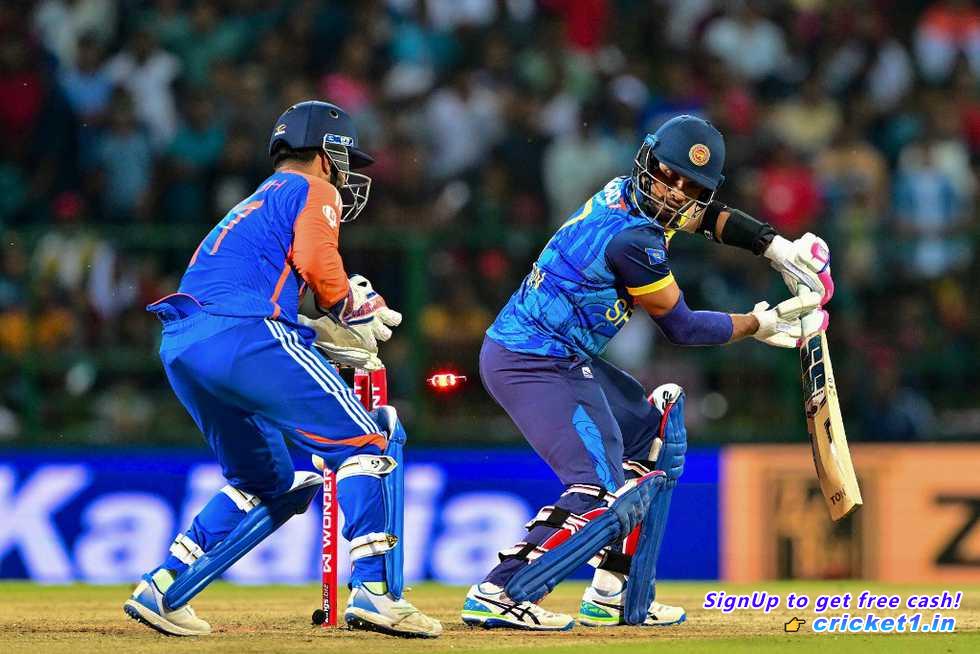
As a massive crowd emptied out of the Pallekele Cricket Stadium on a recent Sunday night, a visibly inebriated man found an unoccupied spot on the footpath and settled down as if it was a luxurious bed in a grand hotel. However, the local police were not as appreciative of his choice of ‘lodging.’ Not far from this unusual scene, a group of boys formed an impromptu band, transforming the street into their stage. They sang, danced, and beat rhythms on a local percussion, their energy infectious. A car full of boys lit up with bright lights drove past, joining the street concert with their own voices, creating a makeshift yet harmonious symphony.
These merry souls had just witnessed their beloved Sri Lankan cricket team lose to the visiting Indian side, in a disappointing match that did not live up to their competitive expectations. It seemed they had either decided to take the loss in stride or had simply determined not to let cricket ruin their last Sunday of July.
Within 30 hours of the Sri Lankan men’s team commencing their post-World Cup T20 revival, feelings of urgency and the need for ‘big decisions’ began to surface. The primary culprit behind this distressing urgency is the persistent failures of their middle order.
In two consecutive games, Sri Lanka’s top order provided blazing starts only for the middle order to squander the momentum within a few overs. In the first game, after reaching a promising 140 for 1 in 14 overs, the host team ended spectacularly fumbling. They needed 76 runs in the last six overs on an otherwise favorable flat pitch with some outfield moisture. But Axar Patel and Ravi Bishnoi dismantled their rhythm, making Riyan Parag’s part-time spin appear almost unplayable. The debacle might have been excused as a chance collapse if it hadn’t repeated itself the very next day.
Batting first on Sunday, the departure of Kusal Mendis was an early setback, but Pathum Nissanka and Kusal Perera seemed to stabilize the situation. Especially Perera, who showed aggression even after Nissanka’s promising start ended. Returning to the team after a hiatus, Perera unleashed his best form, taking apart both Siraj’s pace and Bishnoi’s spin with powerful stroke play—akin to his best performances in the past that had broken some of the strongest bowling attacks.
Standing strong at 130 for 2 after 15 overs, Sri Lanka looked ripe for a late surge, but hopes were dashed again after Hardik Pandya dismissed both set batters. Dasun Shanaka fell by chopping a ball from Ravi Bishnoi onto his stumps, followed by Wanindu Hasaranga bowled out by a googly on successive deliveries. The middle-order collapse ensured Sri Lanka could only muster 161 for 9 by the end of the innings.
Bishnoi couldn’t hide his amusement when discussing whether India had identified Sri Lanka’s struggles against spin. “They play spin really well, but I don’t know what’s happening with them,” he remarked. “They are collapsing in the middle overs. They were known as a good spin-batting team, but I don’t know, something has gone wrong.”
Sri Lanka’s assistant coach, Thilina Kandamby, sought a more practical explanation. “In these conditions, the first 10 overs with a hard ball are easier to bat.
. After 12 overs, the ball gets softer. It’s not an excuse, but our middle order hasn’t been reliable for the last three or four games. We have been struggling, and we need solutions.”
Sri Lanka’s middle-order issues have persisted since the T20 World Cup last month. Despite a season of the Lanka Premier League and attempts to refresh the team by moving away from veterans like Angelo Mathews and Dhananjaya de Silva, the revival they sought remains out of reach. The ‘big decisions’ they contemplate now bring intense scrutiny on their current captain, Charith Asalanka, alongside their former captain, Dasun Shanaka, and their best T20 player, Wanindu Hasaranga.
On the prospect of changing methods or personnel, Kandamby suggests this may be a difficult move but not unprecedented. He emphasized that the issue is more about situational awareness than skill. “It’s about awareness. Our players can play spin, and we’ve demonstrated that. But in crucial moments, the shots and decisions made are key areas where we need to be more conscientious.”
The struggle for consistent performances from players in positions 5, 6, and 7 in limited-overs cricket is not a new dilemma for Sri Lanka; it’s been a longstanding issue. Kandamby, who had featured in 39 ODIs and 9 T20Is, could relate deeply to the pressures of a middle-order batter. “I understand the pressure in those positions, having been there myself. It’s essential to give them security to play there for a while, even if they fail initially. We’ve provided that support in the past.”
He indicated plans to push more experienced players into these critical positions, even in the Lanka Premier League. “You can’t force anyone, though. There are many local coaches in the LPL, and we have to try it out there.”
Kandamby firmly denies that this is a skill-related problem. “People might say it’s because we lack power, but that’s not true. If you look at our six-hitting stats this year, we’re comparable to other teams. The problem is handling situations and sticking through tough scenarios.”
On a day when the Sri Lankan women’s team celebrated an iconic victory, their male counterparts faced a crossroads of tough decisions and trepidation less than 100 kilometers away. While uncertainty loomed over the team, a spirit of camaraderie and optimism brightened the streets. The fans, with their enduring joyous spirit, signaled they are willing to wait for better days.

